Policy Dispatches: My Bodyguard … or Fast, Furious and Safe in Mexico City
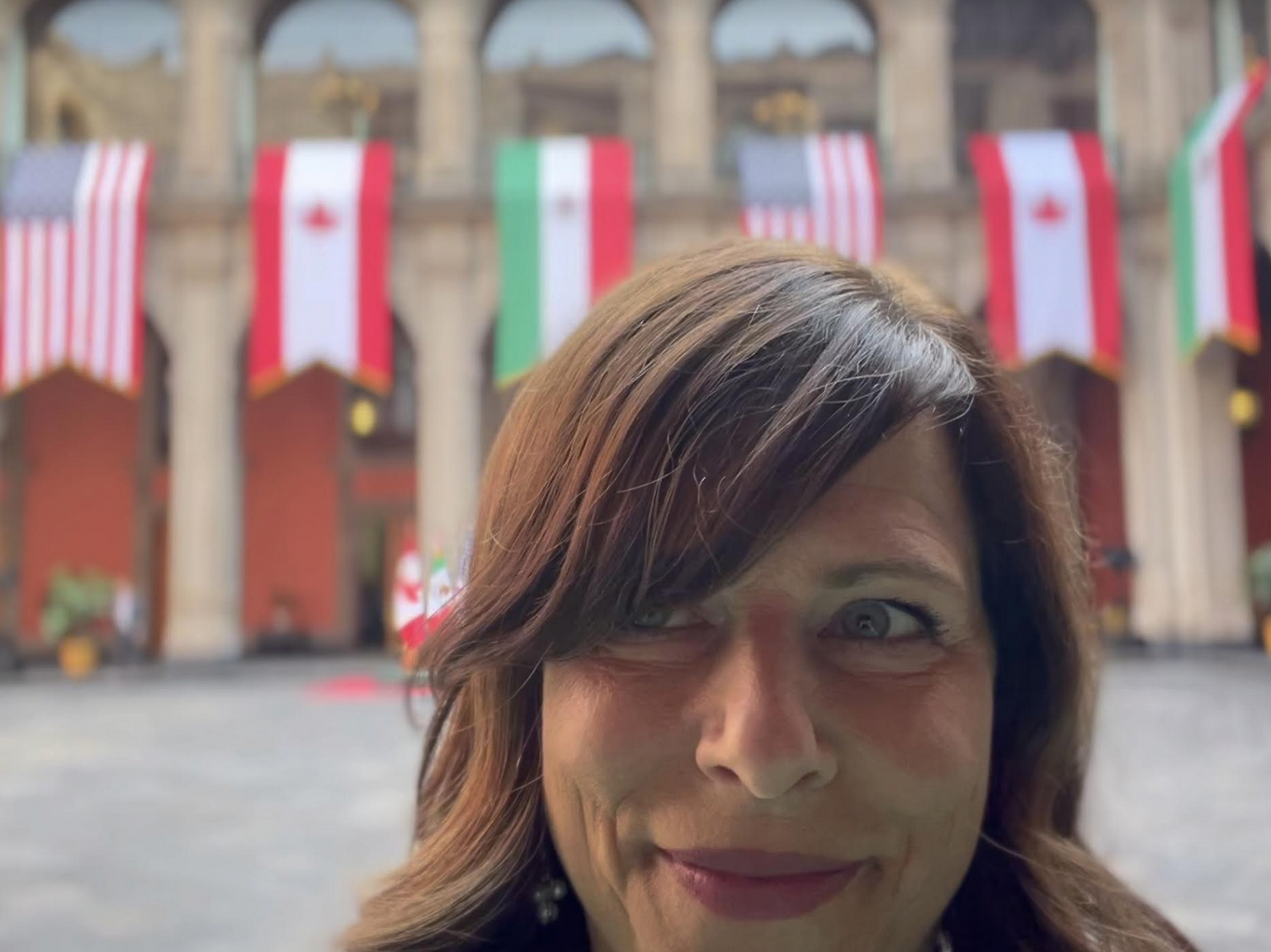
Louise Blais
January 13, 2023
Policy Dispatches are pieces combining travel, policy and political writing from foreign datelines.
Having recently retired from Canada’s foreign service, I welcomed the opportunity to participate in the North American Leaders Summit (NALS) — or “Three Amigos” meeting — in Mexico City, as part of the CEO delegation led by Business Council of Canada President Goldy Hyder.
I’ve served as Canada’s ambassador to the United Nations, among other diplomatic postings, but this time, I would experience the world of summitry from a completely different vantage point; one that did not include the stress and logistical complexities that come with either being a principal interlocutor or managing a Prime Ministerial visit.
I’ve done plenty of those in my career, and high-level visits turn diplomats into event planners and logistical magicians: The intense, granular negotiations with host-country protocol for suitable arrangements; the cars, the security, the hotels; everything from the accompanying media’s needs to the parliamentarian and spousal programs — it’s a high-stakes, three- dimensional jigsaw puzzle, one where the pieces are constantly changing. While all eyes are on the content of the visit, a vehicle not in the right place at the right time or a food allergy or special needs not managed, can have disastrous consequences. Such potential, agenda-eclipsing “mishaps” put the fear of God into the hearts of even the hardiest of diplomats and generate unbridled joy when we hear “wheels up” — protocol code for “The heads of government/state have now departed” and euphoric logistics shorthand for “We survived without a major diplomatic incident!!”
On this trip, all these details were going to be in the able hands of Canada’s ambassador to Mexico, Graeme Clark and his deputy, Shauna Hemingway with their embassy team. My focus was solely on the content of the discussions during the business component of the visit.
 Canadian, US and Mexican business delegations to NALS meeting on January 9th in Mexico City
Canadian, US and Mexican business delegations to NALS meeting on January 9th in Mexico City
Or so I thought…
I discovered that once a diplomat, always a diplomat. I constantly felt the urge to help coordinate. Not that I was needed, it was just an instinct. This manifested itself in me herding the delegation I was a part of, for a group picture, and ensuring everyone was happy. And, at the First Ladies Luncheon, where I was a guest, I found myself subtly adjusting a few protocol elements once the handlers had left the room. I could not help myself.
Yet, my experience overall did contrast with my former role and enabled me to feel like I have truly transitioned. I was also grateful for the unaccustomed, extra mental bandwidth to take in one of world’s most fascinating places — the megalopolis of Mexico City.
This was only my second trip to Mexico City, having attended the North Capital Forum last September. Mexico had simply not been a country that I ever covered while at Global Affairs Canada. Even when I was posted in Washington and later as consul general in Atlanta, I had had only minimal interest in our continental neighbor. My shame, really. Now that I have spent my time since retirement focused on our relations with Mexico — first by co-drafting a Canada-Mexico economic report for the Business Council of Canada, and in participating in a series of trilateral conferences and dozens of panels with a focus on Mexico — I understand what I was missing.
It’s difficult to overstate just how important Mexico is for Canada, and especially now, in this uncertain world, how much our security and prosperity depend on getting the North American piece right. Since NAFTA came into force in 1994 and now with the CUSMA, Canadian trade and investment with Mexico is steadily growing, with over $41.7 billion in two-way merchandise trade in 2021. Mexico is Canada’s third largest trading partner (after U.S. and China), and Canadian direct investment in Mexico was $25 billion in 2021. Nearly two million Canadians travelled to Mexico in 2022.
My own recent exposure to, and focus on, so many Mexican leaders in business, politics, diplomacy and women’s and Indigenous rights has made a huge impression on me. Many of the incredible people I’ve met in the past year I already consider good friends.
And I now realize that for so long, I’d fallen prey to the dramatic headlines we always get in Canada which tend to reduce our perceptions of Mexico to the sort of limited assortment of clichés Canada gets reduced to in breaking news content. In the case of Mexico, they focus on violence (as we saw recently in Mazatlán), drug cartels and migration issues. Not to say that those are not major problems. But Mexico is so much more than what happens on its worst days, or, for that matter, beautiful beaches and Mariachi bands. Mexico City is where that is most evident.
This is a sprawling city — it grew not upward, but outward. Across the metropolis, with just a few skyscrapers, three storeys is pretty much the norm. This densely populated agglomeration sits in a high-altitude bowl, surrounded by two mountain ranges, the Sierra Madre Oriental and the Sierra Madre Occidental, which includes the active volcano Popocatépetl, whose often smoky peak is easily visible from rooftops.
Driving from the airport to the hotel, which is a 35-minute drive in low traffic, you are immediately struck by the fact that Mexican drivers are mavericks. They pilot their cars as if they were fighter jets, making harrowing maneuvers at high speed, miraculously avoiding other cars and pedestrians. I have lived in New York and Tokyo, and travelled to densely populated cities such as Beijing and Seoul, yet I have never seen the complete organized chaos that is navigating your way through this immense, modern, gritty metropolis. One simply has to buckle up and have faith.
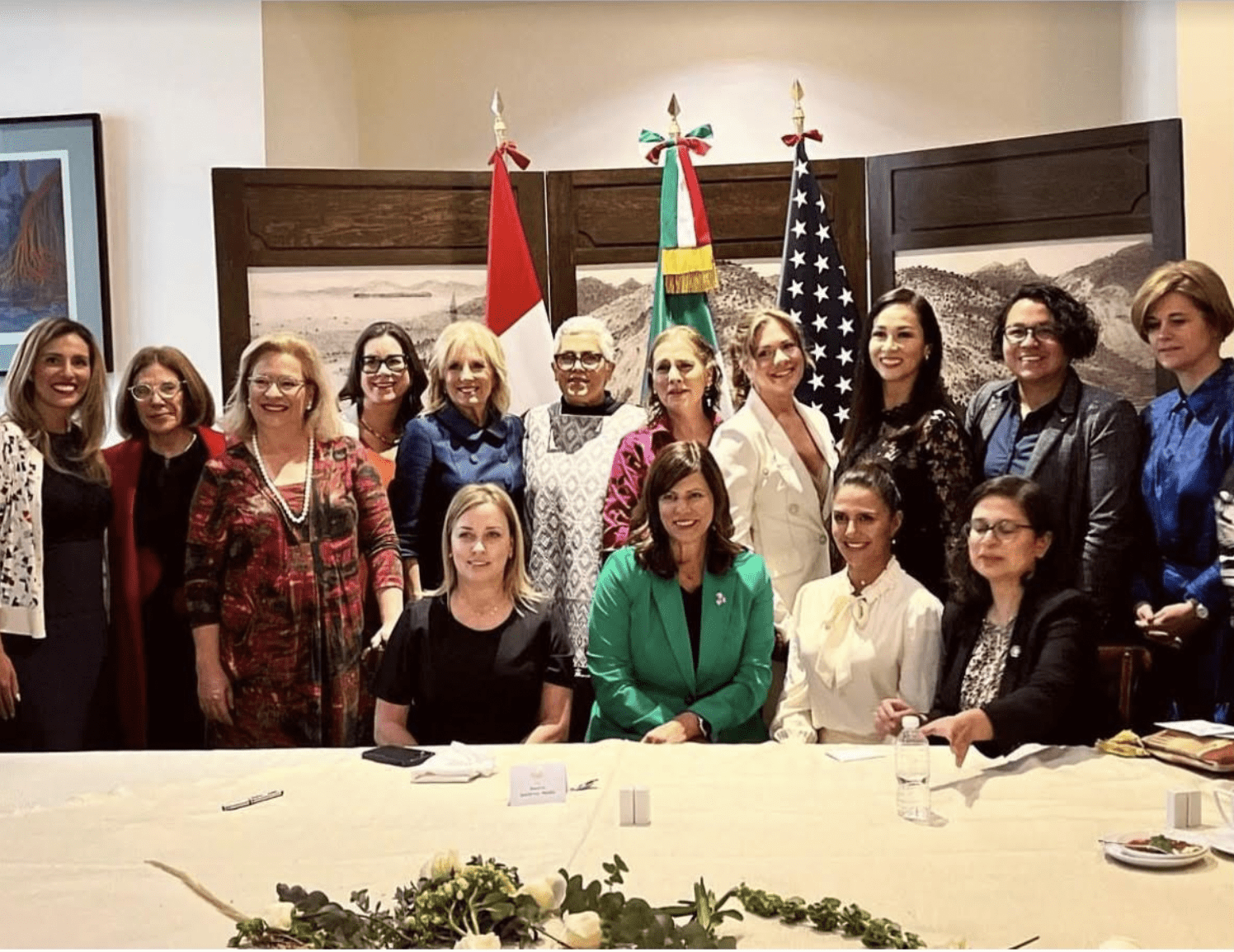 Ladies who Luncheon: The First ladies of Canada, Mexico and the United States host the spousal lunch on January 10th at Palacio Nacional. That’s me in the green blazer.
Ladies who Luncheon: The First ladies of Canada, Mexico and the United States host the spousal lunch on January 10th at Palacio Nacional. That’s me in the green blazer.
As we did on the day of the First Ladies Luncheon. I was with three other Canadian businesswomen, including Torex CEO Jody Kuzenko and Tabatha Bull, president of Canadian Council for Aboriginal Business. Jody had a car organized to take us from the hotel to the Palacio Nacional, which is a 40 minute drive in moderate traffic. That is how we gauged our departure time. However, we had not taken into account the street closures for the visiting motorcades. We were blissfully ignorant of our miscalculation until, by sheer luck, while pulling out of the hotel, we ended up in the slipstream of — essentially included in — US First Lady Jill Biden’s FLOTUS motorcade. This meant driving at crazy-high speeds to stay with the escorted cortège through the closed-off roads. Our car, which felt more like a bullet, was swarmed by paparazzi on motorcycles, crisscrossing in front of us — and who clearly did not mind risking their lives for a good shot. I have been in the PM’s motorcade in the past, but this was particularly hair-raising. It felt like a Hollywood chase scene from the Fast & Furious franchise. Yet, had this fortuitous turn of events not occurred, we would surely have missed the lunch. Gracias, Dr. Biden.
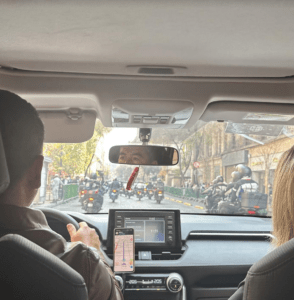
Our motorcade paparazzi escort
In further A-to-B adventures, leaving the event at the Palacio Nacional, I was on my own for transport back to my hotel because the group had gone to the Museo National de las Culturas del Mundo and I had to return to my room across town for live media interviews.
As I waved goodbye to the group, I started my high-heel walk on the cobbled esplanade in front of the high-security protected palace to find a check point where I could exit the security perimeter. As I reached a gate and saw the crowds, the thought immediately crossed my mind that calling an UBER was not going to be simple. There was a group of people ranging from the curious to the obsessed trying to gain entry; some wearing T-shirts with Joe Biden’s picture on them and other paraphernalia. I thought, “If I leave, they’ll try to use the opening of the gate to get in.” What should I do?
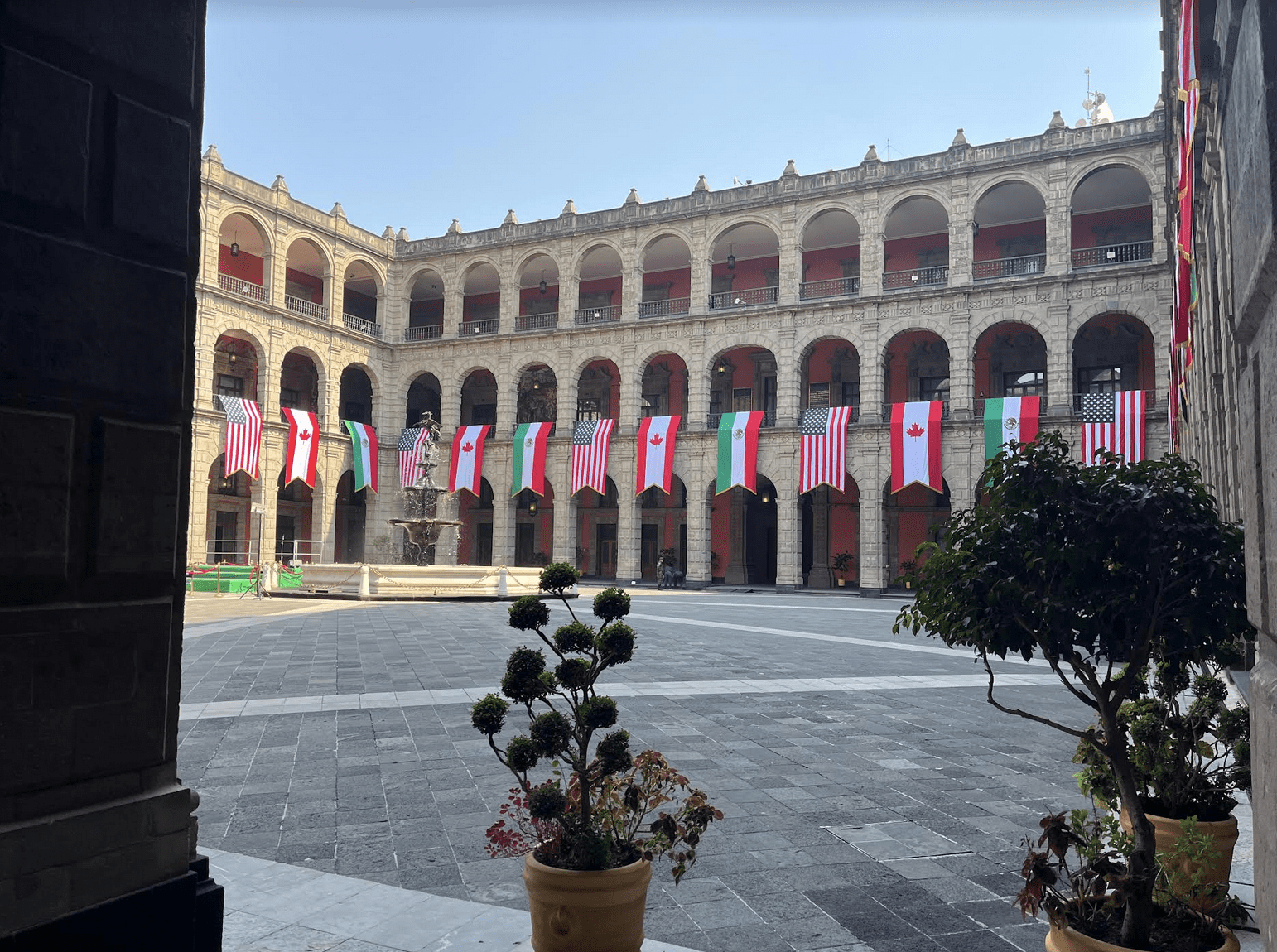 Courtyard, el Palacio Nacional
Courtyard, el Palacio Nacional
I pulled out my phone to request an UBER but got no car willing to come to that location, given the security. My only option was to exit and walk a little further to get away from the human gridlock. I asked the guards if they could open the gate, and they looked at me with expressions that said, “Not on your life.” All they were expecting that day were heavily guarded motorcades, not a Canadian business-suited woman venturing out into the commotion on foot. But I insisted, and gestured to open the gate. As I stepped into the mayhem, one of the more agitated onlookers stood in my way, asked who I was, if I was important and if I could get them in. I thought, hmm, perhaps this was not a good idea. Then, before I knew it, a Mexican G-man in a black suit and tie with a secret service earbud appeared by my side out of nowhere and told people to make way as he bustled me out of the crowd that was caving in on me.
Once in the clear, I thanked him in Spanish, expecting him to retreat inside the check point. He smiled and just kept walking with me. I felt it might be a bit overkill, as I watched the bicycles, motorcycles and cars zip by us on the crowed sidewalk. By then, I was in a busy area with shops and all manner of moving vehicles carrying merchandise speeding by me, rightfully oblivious to the Summit. I felt self-conscious, worried of never finding my way back in time, but not afraid.
As we got to a street corner an UBER driver could reach without too much difficulty, I began the familiar mobile app request. My temporary bodyguard just stood next to me, stoically silent. Somehow, I had become his charge and he was clearly not leaving until I was inside a car. But when my designated UBER driver called to say he was abandoning his attempt to reach me due to the road closures, my new, anonymous protector got on the phone to reassure him that it could be done. It gave me hope that, somehow, I would make it across town.
We stood there together in silence amid the hubbub, me and my Mexican shadow, for almost 30 minutes — both afraid to speak poorly in the other’s language — until the UBER finally arrived.
I will never forget the kindness of that gesture nor the man’s saintly face. As he opened the door to let me get in the car, all I could find to say was “Muchas gracias” with the most grateful expression I could conjure up while putting my hand on my heart. Somehow, for me, that did not do justice to the relief and gratitude I felt inside.
The route back to the hotel ended up taking two hours — the denser the traffic, the crazier the drivers get. Yet, I had the presence of mind to turn that ride into a sightseeing tour. Covering that much ground, this city appeared to me to be much safer than its reputation suggests. With families walking everywhere and shops and cantinas animating the streets with inviting outdoor tables. In Mexico City, life is both hectic and casual, the new blends with the old and the grit is offset by the green parks.
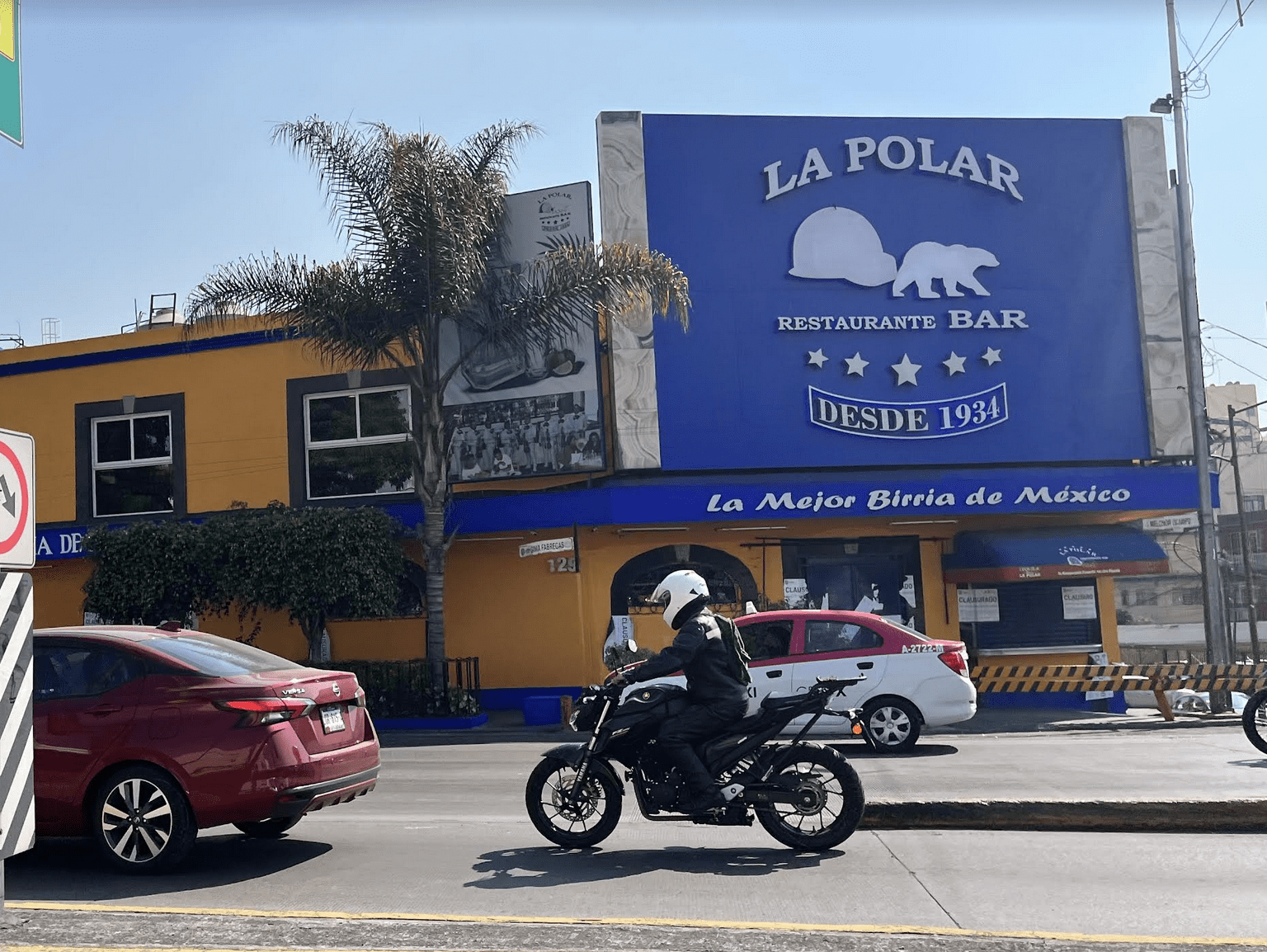 Touch of home: local landmark La Polar, known for the best birria in Mexico City
Touch of home: local landmark La Polar, known for the best birria in Mexico City
While both my trips to Mexico City were focused on work, I did manage a few chances to eat out in restaurants. You can find everything from traditional Mexican fare to some of the best sushi on the planet. My apologies to the Japanese, but I lived in Tokyo for four years and the sushi I ate with friends in a restaurant close to our embassy in Mexico City was perhaps the best I’ve ever had. Not surprisingly, Mexico City is now a foodie destination. Everything is fresh, colorful, plentiful and presented with pride. Top that with attentive, courteous service in a wide range of beautiful surroundings, with temperatures in the low-20s Celsius all year-round, and voila! — a gourmet’s nirvana.
La Ciudad de México is also a city of museums — more than 150 of them, in fact. On my previous trip, I was taken to see the magnificent Mexican art collection of Don Antonio Del Valle Ruiz at the Museo Kaluz. The privately owned museum is housed in a building with a traditional courtyard, which dates back to the 18th century, when it was hostel that welcomed the Spanish friars prior to their evangelization journey. The collection includes works by Diego Rivera, José María Velasco and intimate portrait galleries that, to quote the New York Times, “are brimming with faces of Mexicans rich, poor, white, brown, aristocratic and Indigenous, and documenting the country’s diversity.”
With only one museum visited so far, I feel that I am just beginning to scratch the surface of what the Mexican capital has to offer. And I am struck by the fact that as Canadians, travelling to Mexico usually means going to coastal cities and resorts. Yet, for those looking for a unique city experience, I highly recommend that they put its capital at the top of their destination wish-list. It’s where not just big and important things, but smaller and extraordinary things, can happen.
Louise Blais served as Canada’s ambassador to the United Nations and consul general in Atlanta. She is now an advisor to the Business Council of Canada and diplomat in residence at l’Université Laval.
